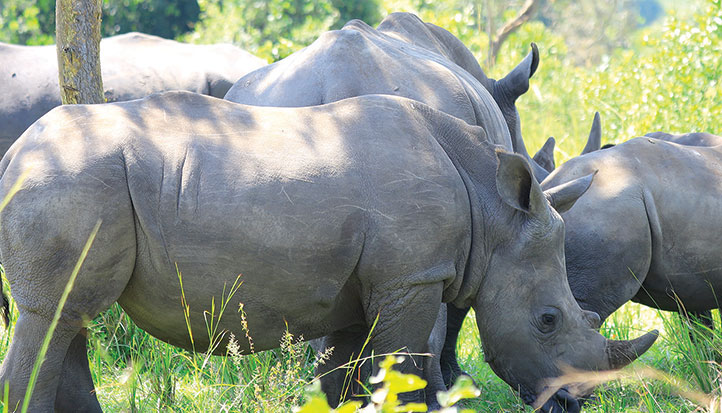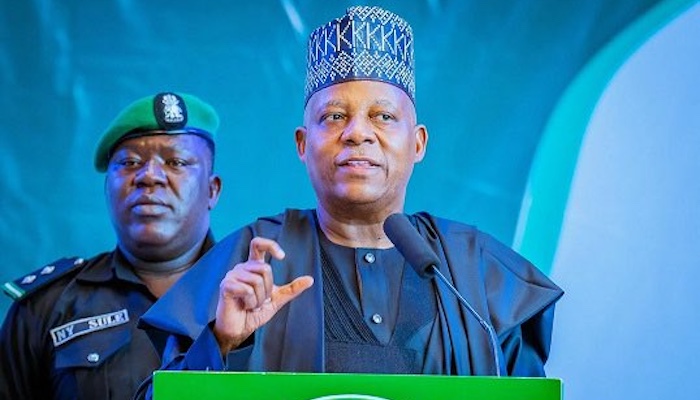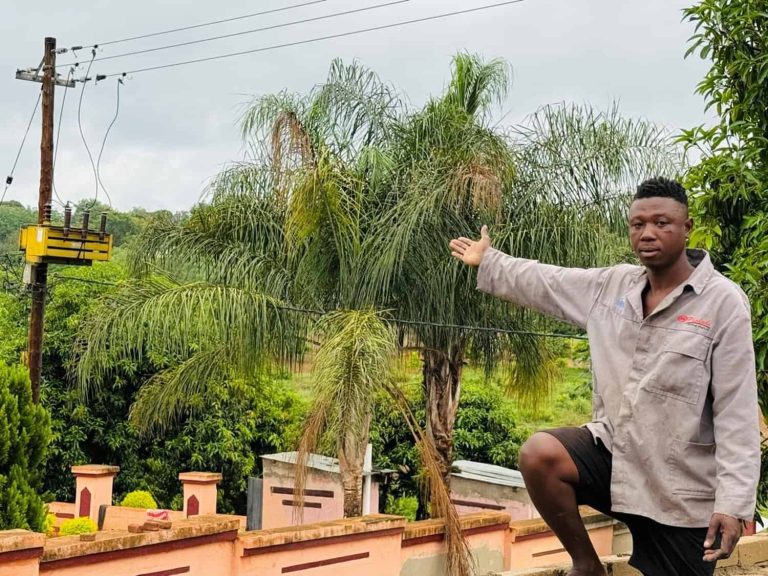
Recently the British high commissioner Lisa Chesney together with Uganda Tourism Board (UTB), CEO Juliana Kagwa, as well as the ED Uganda Wildlife Authority (UWA), Dr James Musinguzi, traveled 176km to the Ziwa Rhino Sanctuary, home to 48 rhinos.
The sanctuary, which is on 70 sq km, is a convenient stopover for tourists heading to Murchison Falls national park, or even Kidepo Valley national park. Chesney’s timely journey to Ziwa Rhino Sanctuary comes as UTB is organizing Uganda’s first-ever “Name a Rhino Campaign”, a five-year campaign which aims to raise $11m (Shs 40bn) to support rhino conservation.
The September 22 event will be presided over by President Yoweri Kaguta Museveni. Okwari James Ducole, the senior warden at the Nakasongola-based sanctuary, said, “Ziwa is the home to over 95% of the surviving rhinos in this country. It is one of the success stories of rhino conservation in Africa. It is also one of the success stories within the public-private partnership in conservation in Uganda. I want to say that the success has been because the private sector and the government came together 20 years ago to bring these rhinos. From six, the rhinos have now reached 48.”
HISTORY OF THE SANCTUARY
According to Sharif Nsubuga, Uganda used to have hundreds of both white and black rhinos, but heavy poaching and political instability between the 1970s and 1980s almost wiped out the horned beasts.
“In 1997, Rhino Fund, a non- governmental organization, was formed with a group of Ugandans, together with Capt. Joseph Roy Ziwa, the owner of this land. In 2001, two rhinos were brought to Uganda from Solio ranch in Kenya, and taken to Entebbe Zoo.

In 2004, Ziwa ranch was identified as a special place for breeding the white rhinos; an electric fence was built covering 70 square kilometers. A year later, four rhinos were brought in again from Kenya, two males and two females.
In 2006, we were joined by a donation of four rhinos from Disney’s Animal Kingdom in Orlando Florida. A total of six rhinos settled well here, and then in 2009, we got our first baby rhino born to a mother from the USA and a father from Kenya – an international baby rhino [we] named Obama. Now the number has grown to 48,” Nsubuga said.
Nsubuga said apart from the rhino, the sanctuary also has zebra, giraffes, Jackson’s hartebeest, bushbucks, waterbucks, Uganda kob, sitatunga, warthogs, pangolin, concubine, aardvark, and over 340 species of birds.
Nsubuga gave his guests rhino tracking guidelines, for theirs and the animals’ safety, before leading the team out in single file.
“If you are fit enough to climb a tree, please make sure you go high enough, but make sure you don’t climb a small tree that is going to bend. Please, please don’t hide behind the biggest person next to you,” he said.
Rhinos are known to be some of the strongest and most aggressive animals in the wild. We commenced the trek by driving to the rhinos’ geolocated grazing grounds and walking in a single file for 40 minutes, until we spotted the rhinos’ 24/7 guards, an indicator that the rhinos were close.
The rhinos at Ziwa have armed guards on rotation, because of their expensive horns that poachers are offered lots of money for. In low tones and with camera flashes switched off, we observed the family of rhinos as Nsubuga explained their dynamics.
Chesney later said: “Ziwa Wildlife Sanctuary has been on [my bucket list] for ages, and I’m so glad I finally visited it. I’ve got a really good understanding of how wide the ranger’s role is. I think my second takeaway is all the effort that goes into building a really good relationship between the UWA rangers, the rhino sanctuary, and the community. [This] shows me why conservation is really important. It’s a source of jobs, it’s a source of money, and it’s probably the crown jewel of Uganda’s ongoing economic growth. So, what an exciting morning!”
Chesney acknowledged Uganda as one of the most beautiful countries in the world and ranked among the top ten globally in terms of biodiversity.
“I’m certainly going to be back, but, also more importantly, I say come to Uganda.” UTB’s Kaggwa said Uganda’s wildlife offering is unmatched, being home to the ‘Big Five plus two’ – chimpanzees and mountain gorillas – making the country one of the few destinations with the Big Seven.
“The Name and Save a Rhino initiative is more than a conservation campaign; it is also a tourism innovation that sets Uganda apart.” Kaggwa said the rhino-naming campaign will allow individuals, institutions and international partners to bid for the right to name rhinos at Ziwa, while others will have the opportunity to befriend a rhino.
Dr Musinguzi noted that with the money raised during the naming campaign, more than 20 rhinos will be relocated to Ajai wildlife reserve and 28 will remain at the sanctuary.
“We’re also going to have rhinos in Kidepo. So, we are having a 10-year rhino conservation strategy, and this is just one of the activities. When we do this, we make sure we conserve for generations, so that our children and grandchildren can see and enjoy these animals,” Musinguzi added.
Additionally, accommodation facilities are being built to support the rangers and conservation teams at Ajai reserve.
“We have given ourselves up to December this year to finish the critical infrastructure that has to be in place for us to be able to move the rhinos. So, we think this can be the Christmas gift for Ugandans who would like to go and see the rhinos in their natural environment.”



